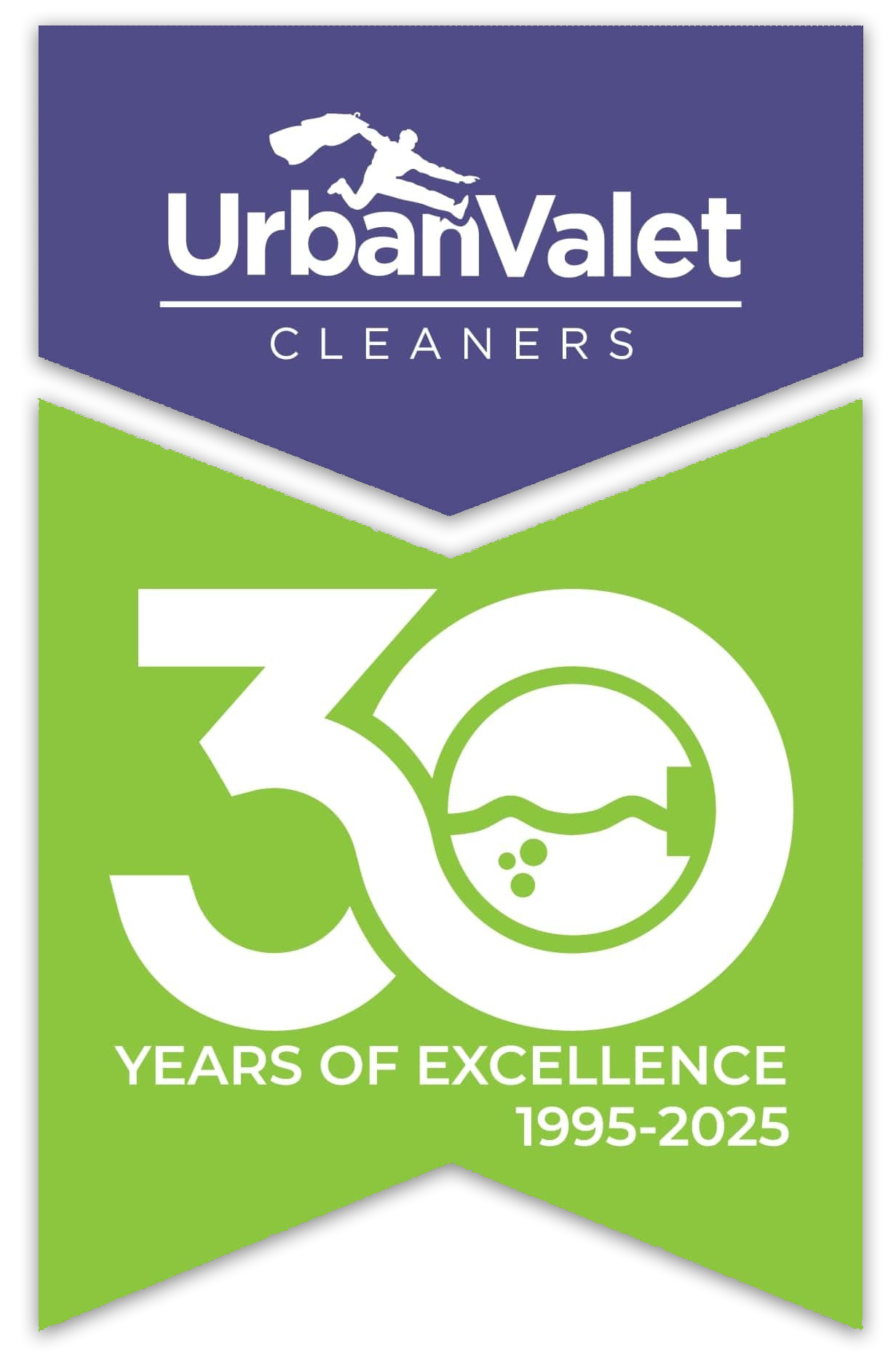Have you ever sent your clothes to a dry cleaner and were recommended to have those pieces wet cleaned instead? It’s confusing, sure, especially when you walk in expecting “dry cleaning” to cover it all. But let’s be very clear here with one thing: wet cleaning and dry cleaning aren’t the same thing, and they’re not interchangeable either. The best method depends on the type of fabric you’re dealing with, how the garment is constructed, and the kind of stains you’re trying to remove.
Some fabrics respond better to water, others to solvent, and a few could go either way if you know what you’re doing. And if you’re not sure which method is safest for your clothes, don’t worry – you’re not expected to know all the details.
Keep reading this post to know how professionals decide what’s best for each item, and how you can spot the signs yourself.
Quick Comparison Guide: Wet Cleaning vs. Dry Cleaning
Wet cleaning and dry cleaning are two different ways to clean your clothes, but they’re not just different by name. They each use a unique process, different equipment, and completely separate cleaning agents. And while both methods are designed to gently clean delicate fabrics, the way they go about it can make a big difference in how your clothes look, feel, and last over time.
So if you’ve ever wondered why your dry cleaner might recommend one over the other or if you’re trying to figure out which is better for your favorite silk top or wool coat, this side-by-side breakdown clears things up. It’s not about which method is “better” across the board. It’s about which is better for your garment.
| Feature | Wet Cleaning | Dry Cleaning |
|---|---|---|
| Cleaning Method | Water-based cleaning with eco-safe detergents | Solvent-based cleaning without water (typically using petroleum or silicone-based solvents) |
| Best For | Everyday fabrics like cotton, linen, washable wool, and some synthetics | Delicate fabrics like silk, rayon, velvet, and garments with structured tailoring |
| Stain Removal Power | Excellent for water-based stains (sweat, food, salt, dirt) | Effective for oil-based stains (grease, cosmetics, ink) |
| Garment Safety | Gentler on most washable fabrics; no chemical residue | Ideal for fragile, lined, or non-washable garments prone to water damage |
| Environmental Impact | Environmentally friendly; no harsh chemicals | Depends on the solvent used – some are more eco-conscious than others |
| Fabric Shrinkage Risk | Slight risk on untested garments if not professionally handled | Low risk when done properly, but some fibers may stiffen over time |
| Odor and Residue | Leaves no chemical smell; clothes smell fresh and clean | May leave a solvent scent if not ventilated properly |
| Color and Texture Preservation | Preserves color vibrancy and softness well, especially with modern machines | Great for keeping textures crisp (e.g., pleats, structure), but may dull certain dyes over time |
| Usage in Professional Settings | Increasingly common in eco-conscious dry cleaning businesses | Still standard for high-end fashion and traditional dry cleaning needs |
| Cost Range | Typically comparable to dry cleaning, sometimes slightly less | Usually a bit more due to solvent and equipment costs |
Clothes Suitable for Wet Cleaning
Wet cleaning works best for garments made from natural fibers or materials that are washable but need a gentler touch than traditional home laundry. If the label says “dry clean,” it doesn’t always mean it can’t be wet cleaned – it might just require professional handling. What matters most is whether the fabric can hold up to water and still retain its shape, texture, and finish.
This method is great for removing sweat, food stains, and everyday grime from casualwear and some formalwear. Wet cleaning is also ideal for customers looking for an eco-friendlier option without compromising cleanliness. And if you or someone in your home has sensitive skin or allergies, wet cleaning avoids exposure to chemical residues that may remain after dry cleaning.
Here are the common clothing items that are safe for wet cleaning:
1) Cotton and Cotton Blends
Everyday items like shirts, blouses, dresses, and trousers made from cotton or cotton blends handle wet cleaning beautifully. Cotton responds well to water-based detergents and doesn’t lose its shape when washed professionally.
2) Wool (Under Specific Conditions)
Lightweight wool garments and blends can often be wet cleaned, especially knitwear like sweaters, cardigans, and scarves. The key is low agitation and cold water to prevent felting or shrinkage.
3) Silk (Tested and Treated)
Many silk blouses, dresses, and even linings can be wet cleaned with the right detergent and cycle. Professional cleaners use pH-neutral detergents and temperature controls to prevent color bleeding and texture damage.
4) Linen and Viscose
Linen garments such as summer suits, tunics, and shirts respond well to wet cleaning. Viscose (a rayon blend) can also be wet cleaned if handled properly, especially with a low-spin finish.
5) Polyester and Other Synthetics
Items like workout clothes, synthetic blouses, and dresses made from polyester or nylon clean up well with water-based solutions.
6) Wedding Dresses (Selective)
Some modern wedding dresses made with water-safe fabrics like polyester blends or unembellished tulle may be wet cleaned. However, the decision depends on trims, stitching, and fabric compatibility, so always ask a wedding dress specialist at your nearest cleaners.
7) Children’s Clothing
Since children’s clothes often get messy and need frequent washing, wet cleaning is perfect. It’s gentle and chemical-free, which makes it safer for sensitive skin.
Clothes That Need Dry Cleaning
While wet cleaning is safe for many fabrics, plenty of garments still require dry cleaning to maintain their structure, texture, or color. These items either don’t tolerate water well or lose their shape during air drying and pressing. Dry cleaning is especially important for clothes that need to look pressed and polished, like business attire or specialty gowns.
Dry cleaning is your best option when you want to preserve a garment’s original look and feel without risking shrinkage, warping, or color bleeding. If you’re unsure, don’t guess – take it to the nearest dry cleaner and ask them to evaluate it for you.

1) Structured Suits and Blazers
Wool, silk, or synthetic suits, especially those with shoulder padding or linin,g require dry cleaning to maintain their shape and drape. Wet cleaning could cause shrinkage or distortion.
2) Cashmere and Fine Wool
While some wool can be wet cleaned, delicate varieties like cashmere are better off dry cleaned to maintain their soft feel and avoid pilling.
3) Leather and Suede Garments
These fabrics can’t handle water without risk of drying out or cracking. Jackets, pants, and skirts made of suede or leather need solvent-based cleaning.
4) Heavily Embellished or Beaded Clothing
Garments with sequins, beading, or metallic threads should be dry cleaned to prevent decorations from melting, fading, or falling off. That includes some wedding dresses and formal gowns.
5) Pleated Skirts and Dresses
Dry cleaning helps maintain the shape of pleats without requiring heat or steam, which can ruin crisp lines.
6) Taffeta, Velvet, and Satin
These luxurious fabrics are very sensitive to moisture. Water can stain or flatten the fabric, especially velvet, which needs gentle handling with specific tools.
7) Coats and Outerwear
Wool, alpaca, and blended overcoats need dry cleaning due to their thickness, lining, and structure. Water can leave spots or cause uneven shrinkage.
8) Vintage or Heirloom Garments
Delicate vintage pieces, especially those with fragile seams or fading dye,s should only be dry cleaned to avoid irreversible damage.
9) Formalwear and Evening Gowns
Evening dresses made of mixed materials, lace overlays, or hand-dyed fabrics must be dry cleaned to maintain shape and color balance.
10) Uniforms and Specialty Items
Military or band uniforms often require precise pressing and structured maintenance, which wet cleaning cannot provide.
Can’t Tell If Your Clothes Need Dry or Wet Cleaning? Urban Valet Cleaners Will Handle It for You!
Wet cleaning and dry cleaning each serve a purpose, and the method that’s right for your clothes depends on the fabric, the type of stain, and the kind of finish you want to see when it comes back. When in doubt, leave it to the professionals who understand the science of textile care and never just toss delicate garments into a washing machine.
At Urban Valet Cleaners, we handle all your dry and wet cleaning needs under one roof. Our proprietary nine‑point process featuring three separate inspection points, guarantees perfection every time. We even replace cracked buttons and tighten loose threads at no extra charge.
For added convenience, we offer FREE Pickup and Delivery Service in Buffalo, Hamburg, Orchard Park, and nearby neighborhoods. Contact our customer service team at 716-670-5073 to schedule your service today!



